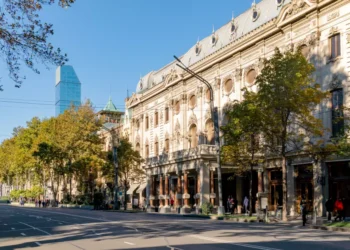India’s ties with Georgia are steeped in a rich historical tapestry that spans from antiquity to modern diplomacy and education and business relations. Although India formally established diplomatic relations in 1992, Georgia hosted no Indian Resident Mission until plans were laid out to set one up this year. Until then, the Indian Ambassador to Armenia doubles as the accredited representative to Georgia.
With the spirit of welcoming this new phase of relations between Georgia and India, GEORGIA TODAY was lucky enough to be invited by the Indian government on a media tour of part of the country at the end of June. The whirlwind visit saw us exploring India’s cultural and political history, and key examples of the country’s private sector as it strives to grow women’s empowerment, green tech, and space exploration. We were also hosted by the Secretary of the Ministry of Ports, Shipping and Waterways who discussed with us India’s ambitious shipping plans, among them the impressive North-South Corridor.
“We are at a very exciting juncture in our bilateral relations,” Ambassador to Armenia, also accredited to Georgia, Nilakshi Saha Sinha, tells GEORGIA TODAY. “Relations have always been very good, very warm; people-to-people ties are very strong, and now, with the opening of the embassy in Tbilisi, relations are being taken to the next level. We already have Indian investments of up to $500 million in Georgia, a hydropower plant in Batumi, more than 16,000 medical students studying here. In exchange, among other things, we offer tech scholarships, and Georgian diplomats are trained at India’s Diplomatic Academy. Meanwhile, the Georgians in India are working to promote their country in a big way, and a lot of Indian tourists, businessmen and students are visiting Georgia, now helped by the new direct flight Tbilisi-Delhi.”
India and Georgia have shared cultural ties for centuries. Georgian folklore often echoes Indian tales, like those from the Panchtantra, and during medieval times, their interactions grew through missionaries, travelers, and traders. An Indian prince even plays a significant role in Georgia’s epic poem ‘The Knight in the Panther’s Skin’ by Shota Rustaveli. Further, in 2021, India returned relics of the much-revered Queen Saint Ketevan to Tbilisi, a gesture that highlighted the deep respect and long-standing connections between the two countries.
Today, the cultural exchange is vibrant, with Georgian artists performing in India and Bollywood gaining popularity in Georgia. The Gandhi Foundation in Tbilisi also promotes cultural understanding through various events and seminars.
On the economic side, while growth is strong, there are some hurdles like limited direct trade routes. However, efforts, including the ongoing discussions on a Free Trade Agreement since 2017, show progress. Indian investments in Georgia, especially in steel and infrastructure, are boosting economic ties, and, as we discovered on our tour, India has much more to offer Georgia in terms of experience and innovation.
Sabka Saath Sabka Vikas – A Lesson Worth Sharing
India says it is committed to lifting millions out of poverty and improving quality of life for its people. Despite housing 17% of the world’s population, the country contributes to less than 4% of global emissions, reflecting its role as a responsible global player. Adopting a “whole-of-society” approach, IIndia seeks to engage everyone, from local communities to businesses and vulnerable groups, in its quest for sustainability. The motto “Sabka Saath Sabka Vikas” (literally “everyone’s support, everyone’s development”) defines India’s belief in “Inclusive Growth for All.”
India’s Healthcare Revolution
India’s healthcare industry is booming, covering everything from hospitals and medical devices to clinical trials, telemedicine, medical tourism, and health insurance. This impressive growth is driven by substantial investments from both public and private sectors. The Ministry of Health and Family Welfare is spearheading efforts to enhance immunization through the Universal Immunization Program (UIP), aiming to reduce under-5 mortality rates from vaccine-preventable diseases. Further, India’s universal health insurance scheme gives 500,000 INR of coverage to each family each year.
The hospital sector alone, valued at INR 7940.87 billion in FY21, is expected to nearly double to INR 18,348.78 billion by FY 2027. Telemedicine is also on a rapid rise, projected to reach $5.4 billion by 2025. Moreover, India’s substantial investment in medical education, INR 17,691.08 crore for 157 new medical colleges since 2014, demonstrates its commitment to expanding healthcare infrastructure and capacity.
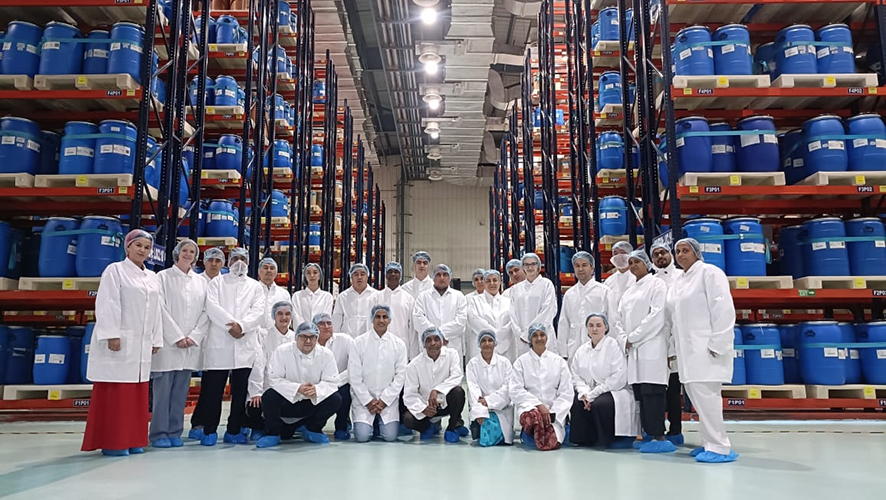
One of our media trips involved an extensive tour of the renowned FTO Unit III of Dr Reddy’s in Delhi, where we got to witness up-close the international-standard process of pill manufacturing, from material delivery to finished, packaged product.
India leads the world in vaccine production, accounting for 60% of global output and being the top supplier of affordable vaccines. It is also the largest global provider of generic medicines, holding a 20% share of the market by volume. One standout example of this success is Dr. Reddy’s Laboratories, founded by Kallam Anji Reddy. The company started out supplying drugs to Indian manufacturers, but quickly expanded into international markets with more relaxed regulatory requirements. This strategic move allowed Dr. Reddy’s to export pharmaceuticals more easily, boosting its growth and profitability.
By the early 1990s, Dr. Reddy’s was using its experience in these less-regulated markets to break into more developed economies like the US and Europe. This expansion was made possible by securing approvals from major regulatory bodies, including the US Food and Drug Administration (FDA), for their products and manufacturing facilities.
India’s Green Revolution: Leading the Charge in Renewable Energy
India has emerged as the world’s third-largest energy consumer and ranks fourth globally in installed renewable energy capacity, with impressive wind and solar power resources. At COP26, India launched its ambitious Panchamrit Plan, aiming for 500 GW of non-fossil fuel-based energy by 2030, the most extensive renewable energy expansion plan globally.
In May, India reported its non-fossil fuel capacity had surged by 396% over the past 8.5 years, reaching over 201.75 GW. This includes hydro and nuclear power, which together account for 45.3% of the total capacity. Solar power has seen extraordinary growth, expanding thirtyfold in nine years to 84.27 GW, with the National Institute of Solar Energy estimating a potential of 748 GWp.
In 2022, India achieved the highest annual growth rate in renewable energy additions at 9.83%. Since 2014, the country’s total renewable energy capacity, including large hydro, has risen by approximately 128%. India also encourages foreign investment in renewable projects, permitting up to 100% FDI under the automatic route as per The Electricity Act 2003.
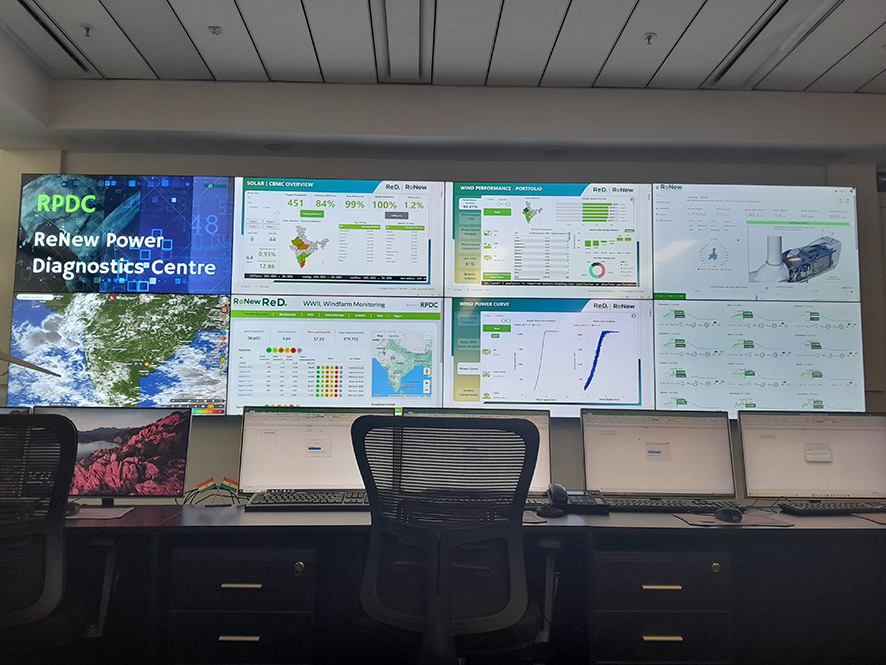
During our media tour, we visited the ReNew headquarters in Delhi. ReNew is a leading Indian firm dedicated to advancing decarbonization solutions, with a mission to drive innovation and sustainability toward a future without fossil fuels.
ReNew, having earned recognition as one of the country’s top renewables-only firms, was among the first Indian firms to list on Nasdaq, highlighting the growing global importance of India’s renewable energy industry.
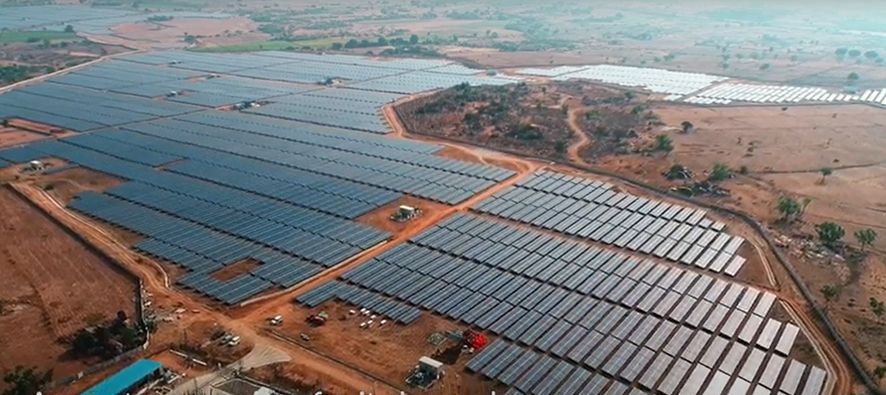
ReNew is known for its innovative approach, seeing it incorporating hybrid technologies, energy storage solutions, and Real-Time Control (RTC) into its operations. One of ReNew’s key innovations is its data-driven approach to enhancing operational efficiency at its solar PV plants. By developing a model that uses detailed data to automate soiling loss calculations and optimize cleaning schedules, ReNew has increased plant yield by up to 0.8% and significantly reduced water use. The implementation of robotic cleaning at its Rajasthan sites, for example, has conserved over 66,000 kiloliters of water, demonstrating how advanced analytics can sustainably enhance renewable energy performance.
Women’s Empowerment Unleashed: FICCI and FICCI FLO Driving Change and Innovation
The Federation of Indian Chambers of Commerce & Industry (FICCI), established in 1927 with the support of Mahatma Gandhi, stands as India’s largest and oldest business organization. As a non-governmental, not-for-profit trade association, FICCI champions the interests of both private and public sector companies, from SMEs to MNCs.

During our visit, we learned about FICCI FLO, a dynamic organization dedicated to women’s empowerment. Founded in 1983 as a part of FICCI, FLO is headquartered in New Delhi and boasts 19 chapters nationwide – representing over 9,500 women entrepreneurs and professionals. For 40 years, FLO has been promoting entrepreneurship and professional excellence among women through a range of initiatives, including workshops, seminars, training programs and capacity-building efforts, empowering women across all sectors and driving inclusive economic growth. Its efforts span three key levels: enhancing employability at the grassroots, supporting entrepreneurship in the middle tiers, and advancing women into leadership and board roles at the senior level.
“We’re not just talking about contributing to such progress,” the Ambassador tells us when we speak to her about India’s achievements in women’s empowerment, “we’re participating and delivering!”
India’s Maritime Vision 2030
India’s strategic position along major shipping routes and impressive 7,517 km coastline are natural advantages. By 2021, India had emerged as a leader in the global ship-breaking industry, holding over 30% of the market share and boasting the world’s largest ship-breaking facility at Alang. To enhance its maritime capabilities, the Indian government has introduced various incentives for enterprises in ports, inland waterways, and shipbuilding.

As part of the media tour, we met with Mr. T. K. Ramachandran, Secretary of the Ministry of Ports, Shipping and Waterways. There, we learned about the Maritime India Vision 2030, launched by the Prime Minister in March 2021, which outlines over 150 initiatives designed to promote coordinated development across all maritime sectors. Alongside this is the Sagar Mala Program, started in 2017, which emphasizes port-led development and the enhancement of logistics-intensive industries. With a $123 billion investment across 415 projects, it focuses on modernizing ports, improving connectivity, boosting industrialization linked to ports, and advancing community development on the coast. These initiatives are expected to generate $2.7 billion in annual revenue from existing assets and create two million direct and indirect jobs by 2030.
Education Meets Innovation: T-Hub Driving Startup Success
In Hyderabad, Telangana, we had the chance to discover T-Hub, an innovation hub that operates as both an innovation intermediary and a business incubator. What we found so inspiring is that it employs a unique model that brings together the Government of Telangana, leading academic institutions in Hyderabad- such as the International Institute of Information Technology, Indian School of Business, and National Academy of Legal Studies and Research, and the private sector.
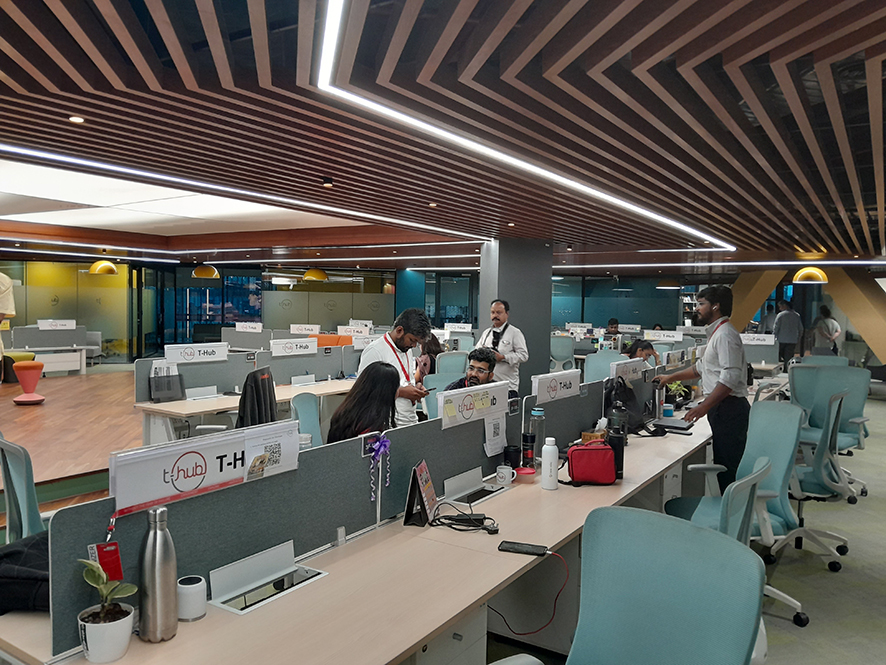
The hub is dedicated to supporting both Indian and international startups by offering a range of resources, as well as fostering innovation ecosystems for various government organizations. T-Hub has earned impressive accolades, including the ‘Best Incubator in India’ award at the National Startup Awards 2022, and recognition as the top National Technology Business Incubator by the Government of India’s Department of Science and Technology in 2023.
India’s Space Odyssey
India’s space sector is renowned for its cost-efficient satellite manufacturing, groundbreaking Mars missions, and successful foreign satellite launches. Currently representing 2-3% of the global space economy, India has set an ambitious goal to boost this share to over 10% by 2030. With over 400 private space companies, India ranks fifth globally in space activity.
The country’s space strategy seeks not only to grow the Indian Space Research Organization’s capabilities, but to expand commercial space technology use and increase industry participation. As global interest in space tourism and asteroid mining rises, India sees privatization as crucial for advancing its space sector.
During our visit, the company ‘Skyroot’ provided us a glimpse into the future of space exploration. Co-Founder Pawan Chandana, a Rocket Engineer turned Space Entrepreneur with a decade of experience and a Forbes ‘30 Under 30 Asia’ accolade, shared with us his company’s mission to revolutionize space access: “We are working towards a future where Space becomes part of our lives, and such a transition will transform humankind like never before,” he noted.
India’s Tourism and Hospitality: A Key Driver of Economic Growth and Global Attraction
Like Georgia, India’s tourism and hospitality sector is a major driver of economic growth and prosperity. As one of the largest service industries, it plays a crucial role in creating jobs and improving infrastructure- from hotels, resorts, and dining options, to more efficient transport networks, including aviation, roads, shipping, and railways.
India’s rich array of tourist destinations includes UNESCO World Heritage sites like the Taj Mahal in Agra, a 17th-century marvel that attracts over five million visitors each year and was honored as one of the New 7 Wonders of the World in 2007. India’s tourism portfolio also features specialized offerings, such as cruise, adventure, medical, and eco-tourism, naturally leading to a rise in tourist arrivals and a boost for job opportunities nationwide.
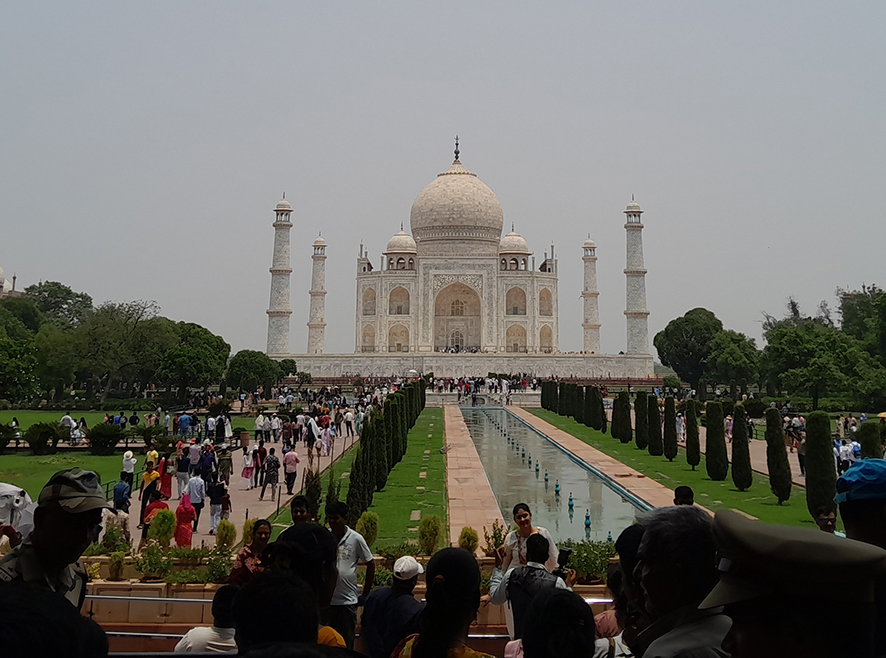
And touching back on that women’s empowerment progress India is so rightly proud of, the country’s tourism sector is a leader in promoting diversity and gender empowerment, serving as a major employer of women and advancing equal opportunities through various supportive initiatives.
Conclusion: A Bright Future Together
India and Georgia are strengthening their partnership through bilateral mechanisms like Foreign Office Consultations and the Inter-Governmental Commission, while people-to-people ties continue to expand. Rooted in centuries-old shared values and cultural ties, such collaboration sets the stage for deeper cooperation across multiple sectors.
India’s rise as a global leader reflects its legacy of innovation and resilience. As they move forward, India and Georgia can be united in their goal of creating a prosperous future for their people, fueled by sustainable innovation and inclusive growth.


